Follow these summer tree care tips describing what to do (and not do!) during the hot, dry summer months to ensure that your trees are healthy and beautiful throughout the entire year.
Trees in our gardens (and in urban settings in general) need attention that woodland or forest trees don’t, especially in summer. This is because urban and suburban streets and gardens often lack ideal growing conditions for trees.
We know the long list of benefits we receive from our urban trees, and we can help them thrive by preventing common tree problems such as:
- Compacted soil that prevents roots, water, and air from penetrating it
- Limited volume of soil in which roots can spread to anchor the tree or find water and nutrients
- Low soil nutrient levels that don’t provide enough sustenance to support trees during the hottest months of the year
- Insufficient water in the soil to keep trees hydrated through the summer
Any, or all, of these things can stress trees in summer. But you can help them stay healthy by understanding what your trees need and how to provide it to them. Keep reading for all the details!
GOOD SUMMER TREE CARE MEANS HEALTHIER TREES ALL YEAR
The summer season roughly coincides with the hottest time of year in central New Jersey and eastern Pennsylvania, extending from June 1 through mid-September. High temperatures average in the mid-80’s, although we see spikes into the 90’s. These are also the months during which we’re most likely to get rain, with monthly average rainfall in the 3 to 4-inch range for much of the summer (which is probably why it can feel so muggy!).
Proper care of trees in summer involves some simple tree maintenance practices that ensure your trees stay healthy all season. Start by keeping an eye on the following:
- Soil
- Water
- Sun & Heat
- Wind & Storm Damage
- Insect & Disease Problems
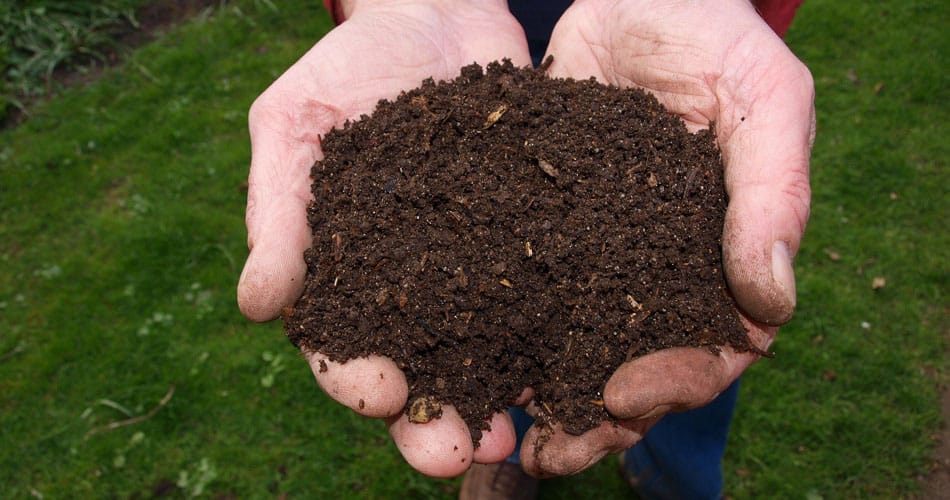 Soil – Improve & protect the soil around trees
Soil – Improve & protect the soil around trees
Making sure your soil has the optimal levels of mineral nutrients and organic matter is important to the health of your trees, especially during summer’s growing season.
Amend soil with compost
Adding compost helps to:
- keep moisture in the soil so trees have more water
- encourage root growth to keep the tree stable and give it more nutrients
- sequester atmospheric carbon to help our environment
These are long-term benefits that can’t be achieved with synthetic fertilizer application!
Replenish mulch around the dripline of your trees
A 2 to 4-inch layer of organic mulch helps to:
- keep moisture in the soil where it can hydrate your trees
- moderate soil temperature
- smother weed growth so you don’t have to weed as frequently and the tree has less competition for water and nutrients
- create a natural barrier to keep mowers and string trimmers from damaging your tree trunks
Reduce synthetic fertilizer use
If you apply synthetic fertilizer to your trees in summer, reduce nitrogen fertilizer to reduce stress on trees during hot weather. Reducing nitrogen fertilizer will prevent the excessive leaf growth that drains your trees’ energy reserves and forces them to take up more water (which is a problem during a hot, dry summer!).
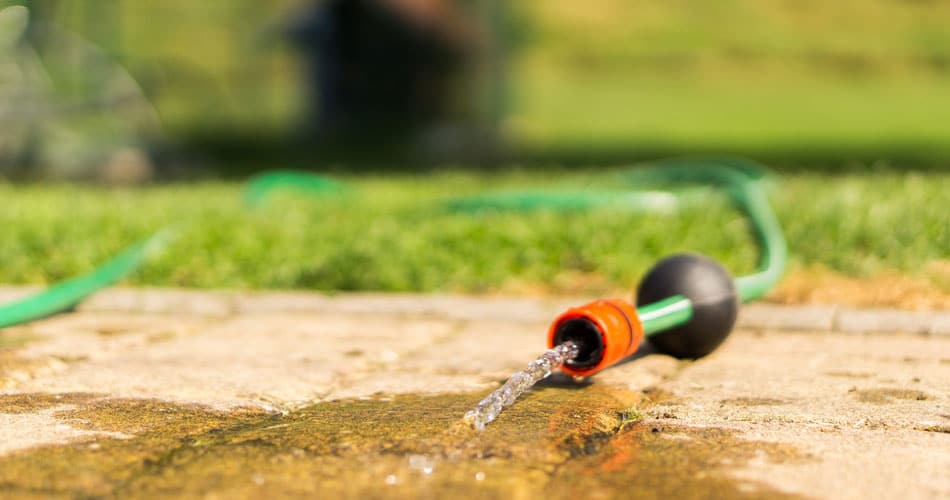 Water – Keep trees well-hydrated
Water – Keep trees well-hydrated
Summers in NJ can be hot, so you’ll want to make sure your trees are getting all the water they need.
The easiest and most efficient way to water trees is with an irrigation system, but you can also use soaker hoses, garden hoses, and even a watering can (for a small tree).
Summer storms will provide some water, but don’t rely on it to keep your trees (or lawn!) green and healthy. It’s regular, deep irrigation that gives trees the kind of deep watering they need.
Summer Tree Irrigation Checklist
Here’s a checklist of summer irrigation tips for watering trees:
- Check your irrigation system for leaks, damage, and water flow level. Wasted water from irrigation system leaks benefits no one, and insufficient tree irrigation encourages trees to develop an unhealthy, shallow root system.
- If you water by hand, practice “low and slow” irrigation. This ensures water is reaching deep into the soil where tree roots can use it.
- Place your garden or soaker hose where the water will trickle along the tree’s drip line.
- Do NOT water up against the tree trunk – tree roots are found farther away from the trunk, along the tree’s drip line. Plus, watering near the trunk will set your tree up for problems with rot and fungal diseases.
- Set a timer so you keep track of your watering time.
- Trees and lawns have different needs. A lawn irrigation system does not provide enough water to fully irrigate trees. Always place trees on separate irrigation valves from lawn sprinklers,.
- Make sure lawn sprinklers do not spray tree trunks or branches.
>> Learn more about Summer Lawn Watering in New Jersey and Pennsylvania.
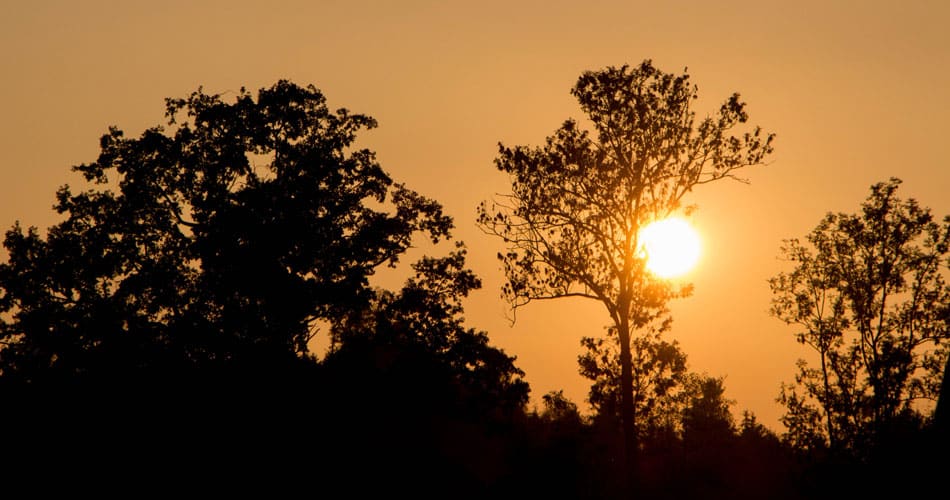 Sun & Heat – Check your trees for signs of heat stress
Sun & Heat – Check your trees for signs of heat stress
When it’s really hot outside, we wilt – figuratively. But trees do it literally. That’s when a little TLC is needed.
Symptoms of Heat Stress in Trees
Keep an eye out for these symptoms of heat stress:
- Drooping, yellow leaves
- Brown leaf tips or margins
- No new leaf growth
- Fruit and flower drop
- Leaf, twig, and branch drop, or stress dormancy
You can help prevent heat stress in your trees by following the best practices described above, such as providing sufficient irrigation, adding plenty of mulch, and amending soil with compost. You can also choose to plant native species – they’re often better adapted to our summer weather and so need less care.
Learn more about heat stress in trees >>
Prune Trees in Summer When Needed
You’ve probably heard that tree pruning is best done in late winter and early spring when trees are still dormant. However, light summer pruning, when done correctly, can also benefit trees.
Pruning trees in summer can help to:
- Reduce excessive or hazardous summer branch growth that could put your safety at risk
- Refine the shape of specimen trees to keep your landscape looking its best
- Remove diseased twigs and branches before they infect the rest of the tree
- Allow sunlight and air into dense tree canopies to help prevent fungal diseases
- Remove dead or damaged branches that could fall unexpectedly
Summer won’t replace the dormant-season for major pruning jobs, but it is useful in particular situations.
Because summer is the most active season for insect pests and diseases, summer pruning should be done carefully and properly. If you think your trees need to be pruned during the summer season, give us a call. We’ll inspect your trees, determine if and when they should be pruned, and recommend the best course of action.
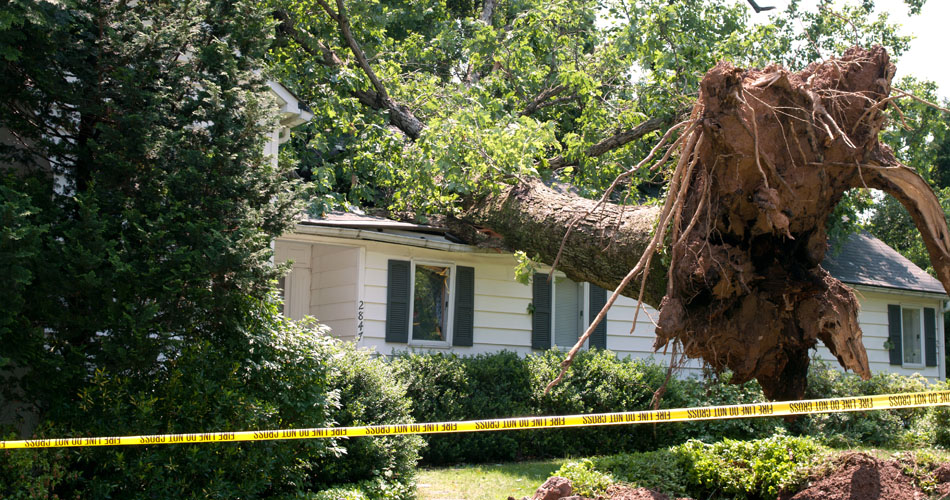 Watch for Storm Damage
Watch for Storm Damage
Summer thunderstorms are often violent and sudden, leaving behind fallen branches, scattered leaves, and sometimes even toppled trees.
After a storm, take a close look at your trees to see if there are any signs of damage that should be addressed quickly by a Certified Arborist.
Look for these visible signs that a tree might be a hazard.
- Root damage
- Poor crown form
- Cracked or split bark
- Dead wood
- Cankers
- Weak branch attachment or co-dominant leaders
- Decay
Learn more about how to identify a hazardous tree >>
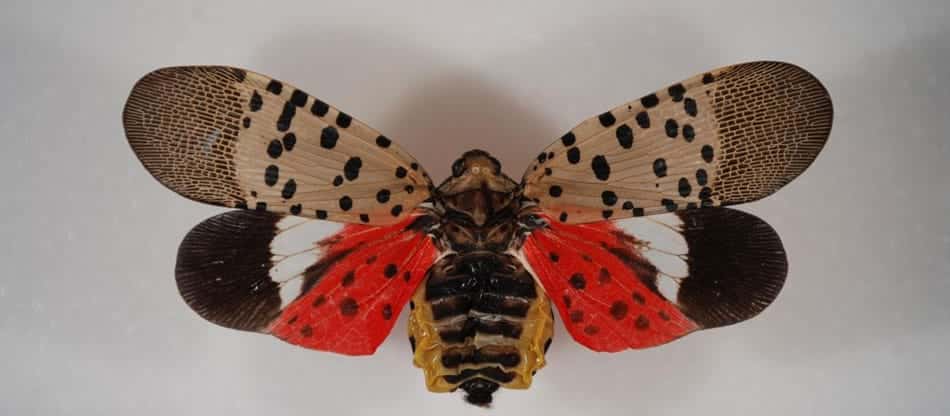 Insects & Diseases – Keep a close eye on trees and shrubs
Insects & Diseases – Keep a close eye on trees and shrubs
Two of the most dangerous invasive insects in New Jersey, the Emerald Ash Borer (EAB) and the Spotted Lanternfly (SLF) can’t be left off your summer tree care list. Stressed trees are attractive to a range of pests and diseases, including the EAB and SLF. These two insect pests are of particular importance because of the damage they cause to our valuable trees.
Emerald Ash Borers
If you have ash trees, remember to keep to your EAB treatment schedule. This destructive insect doesn’t take a break, and it’s your civic responsibility to help curb its spread. Since EAB arrived in New Jersey in 2014, it has continued to spread through the state’s counties.
If you’re not sure if you have ash trees, check out our ash tree identification page.
If you’re not sure if your ash is affected, please review the signs and symptoms of EAB infestation. If you have ash trees, they will eventually be affected, so take action early.
We offer EAB green prism traps as a way to monitor the insect’s spread and give an early warning when treatment may be needed. If you have ash trees and are interested in participating in this important monitoring process, give us a call.
If you have ash trees that have not shown spring or summer growth because of EAB damage, it’s your responsibility to have them inspected and removed before they can become a hazard. We offer safe, fast removal and free estimates.
Spotted Lanternfly
In New Jersey, the counties of Burlington, Camden, Gloucester, Hunterdon, Mercer, Salem, Somerset, and Warren are under quarantine for SLF. If you live within this range, remember that you can’t transport these items from the quarantine area without certification.
Spotted lanternfly is rapidly spreading in both New Jersey and Pennsylvania, and we need your help to document its expanding range. In summer, when the insects are active, you may see one or more “instars,” or immature stages of the insect in or around your trees. Document the location of the insect first then stomp on it!
If your trees show signs of SLF infestation, call us right away. We can explain what needs to be done and give you an estimate for treating or removing trees.
Learn the facts about spotted lanternfly in NJ and PA >>
Japanese Beetles
In our area, adults start to emerge from the ground and begin feeding on plants in late June. Over the next 4 to 6 weeks they’ll continue to feed on the tissue between the veins of leaves, giving leaves a lace-like appearance. White grubs hatch in late July to early August and quickly grow to their full size of about 1 inch long. They immediately start feeding on plant roots, with feeding activity reaching its height in late fall.The primary grub control treatment should be done in late summer before damage becomes apparent (mid-July to August). Spring treatment is less effective as grubs feed less at that time.
Other Insect Pests & Diseases
Summer brings out many other damaging insects and harmful diseases. Below are a few to look out for:
- apple scab
- fireblight
- bacterial leaf scorch
- aphids
- spidermites
See the 5 most damaging tree diseases in our area >>
Learn how our Integrated Pest Management program can manage insect and disease problems >>
TREES ARE INVALUABLE – TREAT THEM THAT WAY
We can all contribute to the future health of our urban and suburban forests by caring for our trees today. Summer tree care to help your maturing trees ensures their longevity, and planting young trees now means that future generations will have the same opportunity to spend a hot summer day beneath the shady canopy of a welcoming tree.
As part of a TCIA Accredited tree service company, our ISA Certified Arborists are uniquely positioned to recommend an annual tree maintenance program that includes the right summer tree care activities to keep your landscape healthy and looking its best in all seasons.
Call us today at 908-309-6611 for a complimentary inspection and summer tree care estimate.
GET THE LATEST NEWS
Subscribe to the Organic Plant Care Newsletter and get timely and helpful tips and updates monthly.
There's no spam - we promise!





